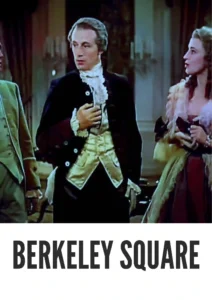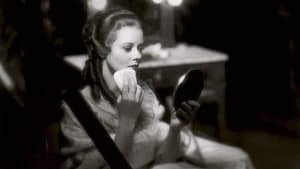Video Sources 0 Views
- Berkeley Square 1933 Colorized


Synopsis
Table of Contents
ToggleTime-Crossed Lovers in Color: Berkeley Square (1933) A Classic Romance Reimagined

Experience the enchanting romance of Berkeley Square, a timeless classic from 1933, now exquisitely colorized for a truly immersive viewing experience. Starring Leslie Howard, this film transcends the boundaries of time, blending historical drama with a touch of fantasy. Perfect for vintage film aficionados and lovers of poignant love stories, this HD download brings a new dimension to a beloved cinematic gem.
Berkeley Square Storyline: A Leap Through Time and Love
Berkeley Square tells the story of Peter Standish (Leslie Howard), an American living in 1930s London who is obsessed with his family’s history and their ancestral home at Berkeley Square. When he inherits the house, he becomes inexplicably transported back in time to 1784, inhabiting the life of his ancestor.In the 18th century, Peter finds himself in a world of powdered wigs, arranged marriages, and rigid social customs. He becomes entangled with two sisters, Helen (Heather Angel) and Kate (Beryl Mercer), and struggles to reconcile his modern sensibilities with the expectations of the era. As he navigates the complexities of love and society, Peter must decide whether to remain in the past or find a way back to his own time. Berkeley Square is a beautifully crafted tale of love, time travel, and the enduring power of the human spirit.
Movie Cast
The film features a stellar cast of actors who bring this romantic story to life:
- Leslie Howard as Peter Standish
- Heather Angel as Helen
- Beryl Mercer as Kate Pettigrew
- Samuel S. Hinds as Ambassador to France
- Irene Browne as Lady Anne Pettigrew
Movie Genre
Berkeley Square gracefully blends the genres of romance, historical drama, and time travel, creating a unique and captivating cinematic experience. Its exploration of love across centuries and its depiction of contrasting social mores make it a thought-provoking and emotionally resonant film.
Historical Context: A Pre-Code Era Romance
Released in 1933, Berkeley Square captures the romantic sensibilities of the Pre-Code era in Hollywood, with its daring themes and emotionally charged storytelling. The film was produced during a time when studios were experimenting with new narrative techniques and pushing the boundaries of conventional storytelling. Berkeley Square, with its innovative premise and stellar performances, remains a testament to the creative spirit of early Hollywood cinema.
Colorization Details
This colorized version of Berkeley Square has been meticulously restored using state-of-the-art digital techniques, enhancing the visual appeal while preserving the film’s original charm and emotional depth. The colorization process involved careful analysis of the grayscale tones of the original black and white footage and assigning appropriate colors to each scene. While the exact software used is proprietary, the methods employed included advanced algorithms for color palette selection and image enhancement. This painstaking process breathes new life into the characters and settings, making the story even more captivating for modern audiences. While the practice of colorizing classic films may spark debate, it introduces these cinematic treasures to a wider audience, ensuring their continued appreciation for generations to come.
Technical Details
- Director: Frank Lloyd
- Screenplay: Sonya Levien, John Balderston
- Based on: the play Berkeley Square by John Balderston, which was based on Henry James’ unfinished novel The Sense of the Past.
- Cinematography: Ernest Palmer
- Edited by: Margaret Clancy
- Production Company: Fox Film Corporation
- Distributed by: Fox Film Corporation
- Runtime: 84 minutes
Technical Specifications
- Download Format: MP4
- Resolution: HD (1080p)
- Compatibility: Compatible with most devices, including smartphones, tablets, computers, and smart TVs.
Reviews and Critical Reception
Berkeley Square (1933) received widespread acclaim upon its release, earning praise for its innovative storytelling, stellar performances, and elegant production design. The film was nominated for two Academy Awards, including Best Actor for Leslie Howard. Today, Berkeley Square remains a beloved classic, celebrated for its timeless romance and its thought-provoking exploration of time and love.
FAQs
- Q: What is Berkeley Square about?
- A: Berkeley Square is a romantic time-travel drama about an American man who travels back to 18th century London and falls in love.
- Q: Is Berkeley Square (1933) a well-known film?
- A: Berkeley Square is a highly regarded classic, known for its innovative premise and stellar performances.
- Q: Is this version of Berkeley Square colorized?
- A: Yes, this version has been professionally colorized to enhance the viewing experience.
- Q: What makes Berkeley Square interesting for classic film fans?
- A: Berkeley Square offers a unique blend of romance, history, and fantasy, with a thought-provoking exploration of time and love.
- Q: What is the download format?
- A: The download format is MP4, which is compatible with most devices.
- Q: What resolution is the download?
- A: The resolution is HD (1080p), providing a high-quality viewing experience.
Download Now in HD!
Watch Berkeley Square Today!











